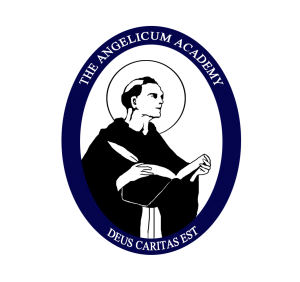
Patrick S. J. Carmack
THE GREAT BOOKS MOVEMENT
A Return to the Classics
by Patrick S. J. Carmack
The Great Books Movement, being a movement or change, begins one place and ends another. The movement is not physical, but intellectual, and, hopefully, volitional (involving the will) as well. Further, the experience of those in the Great Books movement is that the change involved is most often much for the better, in fact remarkably so. Following are four of the basic opening questions, and answers, upon which the Great Books Movement was based.
OPENING QUESTIONS
Why a “books” movement? Because reading is good for the mind: it requires individuals to acquire basic intellectual skills; the art of reading; the art of speaking about what is read; the art of thinking about what is read and discussed. Beyond that, reading books increases the opportunity for the mind to gain a little insight, understanding, and wisdom. Reading, and discussion of what is read, provides conditions favorable for the acquisition of these favorable mental qualities.
“If there is some purpose of the things we do.will not knowledge of it have a great influence on life? Shall we not, like archers who have a mark to aim at, be more likely to hit upon what we should? If so, we must try, in outline at least, to determine what it is.” – Aristotle
Why great books? Because greatness means excellence – the highest and best materials on which the human mind can work in order to gain insight, understanding, and wisdom. Obviously, inferior materials lessen the opportunity for such gains, to the point – with poor to bad materials – that nothing is gained and much may be lost. No one can any longer read all books, or even most books, but only a very tiny percentage of the total number of books. Therefore, to maximize the gains to be made from reading, the best should be read – the great books.
“Contact with writers of genius procures us the immediate advantage of lifting us to a higher plane; by their superiority alone they confer a benefit on us even before teaching us anything….they accustom us to the air of the mountaintops….In that world of lofty thought the face of truth seems to be unveiled; beauty shines forth…” The Intellectual Life, A.G. Sertillanges, O.P.
Will reading make one good, or at least better? No, at least not directly, but it can be a great help to that end. Goodness in that sense is a quality of the will, not of the mind. However, as Aristotle noted, above, if having some understanding and wisdom is of some advantage to a man, then reading the great books can improve the mind and so help a man in the pursuit of happiness and in the performance of his duties. But merely reading, even the great books, does not make better men. However, it does provide the best opportunity for the improvement of the mind, and if that opportunity is taken, and other factors cooperate (including a good will), the result may be a better man and a better society.
“If then the power of speech is a gift as great as any that can be named,-if the origin of language is by many philosophers even considered to be nothing short of divine,-if by means of words the secrets of the heart are brought to light, pain of soul is relieved, hidden grief is carried off, sympathy conveyed, counsel imparted, experience recorded and wisdom perpetuated,-if by great authors the many are drawn into unity, national character is fixed, a people speaks, the past and the future, the East and the West are brought into communication with each other,-if such men are, in a word, the spokesmen and prophets of the human family,-it will not answer to make light of Literature or to neglect its study; rather we may be sure that, in proportion as we master it in whatever language, and imbibe its spirit, we shall ourselves become in our own measure the ministers of like benefits to others, be they many or few, be they in the obscurer or the more distinguished walks of life,- who are united to us by social ties, and are within the sphere of our personal influence.” – Blessed John Henry Cardinal Newman
Having established some of the great importance and value of reading great books (and the limitations thereof), we now are faced with the fourth question mentioned above:
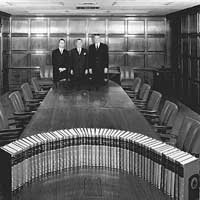 What criteria ought to be used to select the greatest books to read? The answer to this question sets us on our course to look at the Great Books Movement, which began when one man – John Erskine – having arrived at some semblance of the conclusions cited above, in answer to the first three questions, had to grapple with that fourth question.
What criteria ought to be used to select the greatest books to read? The answer to this question sets us on our course to look at the Great Books Movement, which began when one man – John Erskine – having arrived at some semblance of the conclusions cited above, in answer to the first three questions, had to grapple with that fourth question.
The first answer is that there are many answers – men have disagreed in compiling lists of the greatest books. In the 19th century Oxford and Cambridge Universities each put together classics courses and so short lists of classics, but no comprehensive list as such. At the end of that century , also in England, Sir John Lubbock published his list of “the 100 best books.” In 1901 Charles M. Gayley compiled a list of great books for his course of that name at Berkeley. In 1910 Charles W. Eliot, President of Harvard, edited an extensive list of great books entitled The Harvard Classics which became known as “Dr. Eliot’s five-foot shelf of books.” This was a marvelous collection and is still in print. However, as the description implies, it was merely Dr. Eliot’s personal list (as Sir John’s was his), and so lacked any kind of broader consensus regarding his selections. Other lists compiled by individuals or various publishing houses (e.g. the Modern Library series, the Everyman’s Library series, Oxford Press series of World Classics, Penguin Classics, Book-of-the-Month Club) suffer from the same defect (as well as commercial considerations). Indeed, the great books movement originally suffered from that very same defect, resulting in more personal bias influencing the list than was reasonably avoidable or desirable. This was later minimized with the expansion of the movement.
THE BEGINNING OF THE MOVEMENT

John Erskine
The relevant course at Columbia University in New York first taught by John Erskine, a musician, author and literature prof, who specialized in Elizabethan literature, was originally titled General Honors and the books he assembled were called the “Classics of Western Civilization.” Erskine’s first list was simply his own list of 52 books. Had it gone no farther, the movement would never have taken off – at least from there. But Erskine combined his list of classics with a discussion group approach – now commonly called a Socratic discussion group (or Socratic seminar or tutorial). He had his students read one classic a week and then meet once a week for a two-hour discussion sitting round a large oval table.
When it began in 1921, there was only one discussion group, which Erskine conducted by himself (he was a soloist on piano as well, at the NY Philharmonic). To catch the flavor of his course, here are two bits of advice about reading the classics which Erskine penned and must have spoken, in substance, in that class as well:
“The fact that a book is famous is enough to scare off some people who, if they had the courage to open the pages, would find there delight and profit. We make the mistake of fearing that the immortal things of art must be approached through special studies and disciplines, and we comfort ourselves on the principle of sour grapes, by deciding that even if we were prepared to read the classics, we should find them dull. But one explanation of any long fame is that it is deserved, and the men who wrote these books would have been horrified if they had known that you and I might think of them only as matter for school and college courses. They wrote to be read by the general public, and they assumed in their readers an experience of life and an interest in human nature, nothing more. . .
It is advisable to sample as many of the great books as we can, for the first ones we come to may not be those which reflect us most completely. But once we have found our author, we have only to read him over and over, and after a while to read out from him, into the authors who seem kindred spirits. When the reader has found himself in two great authors, he is fairly launched. But the books should be read over and over. Until we have discovered that certain books grow with our maturing experience and other books do not, we have not learned how to distinguish a great book from a book.” John Erskine
In 1921, Mortimer J. Adler took the course as a student. The course was popular and in 1923 the number of General Honors groups were increased and were staffed by two instructors each, to insure a broad knowledge between the two moderators since the groups discussed a wide array of books in various disciplines. It was then that Adler was selected to co-moderate one group with the poet, Mark Van Doren. Van Doren later won the Pulitzer prize (1943) for his Collected Poems, and succeeded Erskine to teach the Shakespeare course at Columbia. Van Doren’s sons, Charles and John, later worked with Adler in various endeavors to promote the Great Books Movement. Adler continued to participate in such groups right up to the present – 79 years. Why this devotion to a course?
“Most professionals teach by telling; amatuers, among whom Socrates was a paragon, teach by questioning.” Adler wrote that line tongue-in-cheek to explain the difference in Socrates’ – and Erskine’s – teaching method. It was not just the excellence of the materials which Erskine had selected – there had been classics courses before Erskine’s – but the excellence of the Socratic teaching method as well. It was the fortuitous combination of the two that clicked: reading great material and then discussion of it. Adler wrote of this:
“Our minds, unlike our bodies, are able to grow until death overtakes us. The only condition of its continual growth is that it be continually nourished and exercised. How nourished? By reading the great books year after year. How exercised? By discussing them.”
Erskine had hit on something that worked and his students were stimulated, delighted and enlightened by it. A movement had been born, though no one realized it at the time. Erskine taught at Columbia from 1909 to 1937, but after he wrote a bestseller (Helen of Troy) in 1925 he used the proceeds to pursue his other interests. He wrote 45 books and became president of Julliard School of Music and director of the Metropolitan Opera Association. Erskine (b. 1879) died in 1951.
By 1925 the General Honors course had grown to a dozen faculty. Rexford Tugwell was Chair and in 1927 he appointed Adler to reconsider Erskine’s list of classics. The result of suggestions Adler solicited from others on the faculty and his own, was a revised list of 176 authors to be voted on by the General Honors faculty. 19 authors were approved unanimously, and 76 authors total – the overall approval rate was about 90%. Various authors – such as Shakespeare – were selected for more than one work.
Benton, Hutchins, Adler, and a set of what Hutchins called “colorful furniture.”
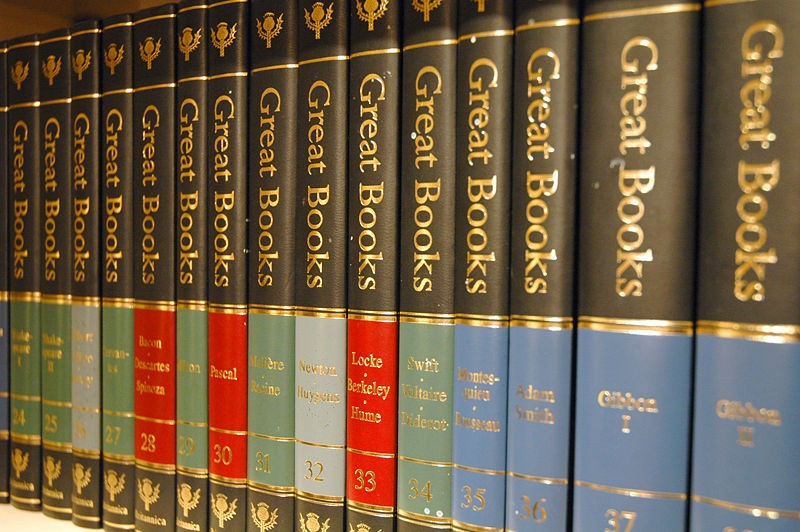 Adler’s revision of the list grew to 130 authors. Finally, in 1947 Sen. William Benton asked Hutchins, Adler, and the rest to draw up a definitive list for publication by Encyclopaedia Britannica as the Great Books of the Western World set. Erskine, Hutchins, Adler, Van Doren, Scott Buchanan, Stringfellow Barr and Alexander Meikljohn constituted the Advisory Board – all of them now with many years and broad experience in the Great Books Movement. After much consultation, reexamination of existing lists, many votes, reconsiderations, and so on, a final list including 74 authors (433 works) was published in a 54 volume set, including 1 introductory volume written by Hutchins and a 2 volume great ideas index (the Syntopicon) edited by Adler.
Adler’s revision of the list grew to 130 authors. Finally, in 1947 Sen. William Benton asked Hutchins, Adler, and the rest to draw up a definitive list for publication by Encyclopaedia Britannica as the Great Books of the Western World set. Erskine, Hutchins, Adler, Van Doren, Scott Buchanan, Stringfellow Barr and Alexander Meikljohn constituted the Advisory Board – all of them now with many years and broad experience in the Great Books Movement. After much consultation, reexamination of existing lists, many votes, reconsiderations, and so on, a final list including 74 authors (433 works) was published in a 54 volume set, including 1 introductory volume written by Hutchins and a 2 volume great ideas index (the Syntopicon) edited by Adler.
Of course, any book list will change with time. But it can be said that for books prior to the cut-off date selected by the Board (c. 1900), the Britannica list was certainly the product of a broad consensus of experts consulting in many fields, practiced in the field of reading, comparing, and discussing the classics. In 1990 Britannica asked Adler to update the list and the result was a list of 130 authors (517 works) published in 60 volumes (including 6 volumes of 20th century works [to c. 1950] and the 2 volumes updated Syntopicon). Is this the definitive list? No, but it cannot be denied that it is about as good a place to start – when you make you own list to read – as can be had anywhere, and probably very much better.
The selection criteria developed by the Board are interesting: 1.) Contemporary significance – not confined exclusively to one historical era, a timeless and universal appeal; 2.) Rereadability – books intended for rereading, many times and worth the effort due to their insights, beauty, and wisdom; 3.) Extensive relevance to the great ideas – each author selected has something significant to say about a large number of the great ideas; their contirbution to the great on-going conversation in Western civilization. Scott Buchanan had also introduced the criterion of 4.) indispensibility to anyone’s education, which was accepted. It was possible to reach near unanimity in selecting the pre-1700 classics, but as the modern period was approached it became more difficult to find the 90% consensus, which was, however, finally achieved with the 1990 set.
The GREAT CONVERSATION, the GREAT IDEAS and the SYNTOPICON
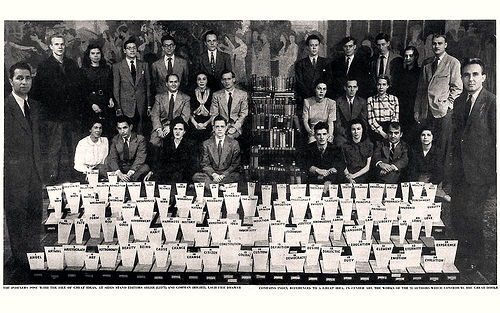 Hutchins and Adler, as well as the others, had gradually discovered in their discussion groups that they were also participating in a much larger group discussion, one spanning the centuries. The authors of the classics often wrote about what their predecessors had to say about this idea or that, this topic or that, and responded to it by commenting on it or refuting it. The topics they wrote about tended to be the same, and they were generally well aware of what their predecessors had written, so they carried the discussion one or more steps further. So noteworthy was this fact, that Adler later compiled evidence of it in Author-to-Author and Author-to-Idea indices which connect the authors, demonstrating the intense interconnectedness of the classics and intellectual activity of the Western authors, over the nearly 3,000 years in which they wrote. Through their books, the thought of the authors of the classics continually influences the living, in each generation right up to our day, to the extent they are read and discussed. To date, no generation in the West has entirely neglected or forgotten them, though at times this has nearly happened (e.g. in the Dark Ages after the barbarian invasions of Europe, and in our day). On the other hand, renewed study of the classics has initiated several cultural flowerings (e.g. the Renaissance).
Hutchins and Adler, as well as the others, had gradually discovered in their discussion groups that they were also participating in a much larger group discussion, one spanning the centuries. The authors of the classics often wrote about what their predecessors had to say about this idea or that, this topic or that, and responded to it by commenting on it or refuting it. The topics they wrote about tended to be the same, and they were generally well aware of what their predecessors had written, so they carried the discussion one or more steps further. So noteworthy was this fact, that Adler later compiled evidence of it in Author-to-Author and Author-to-Idea indices which connect the authors, demonstrating the intense interconnectedness of the classics and intellectual activity of the Western authors, over the nearly 3,000 years in which they wrote. Through their books, the thought of the authors of the classics continually influences the living, in each generation right up to our day, to the extent they are read and discussed. To date, no generation in the West has entirely neglected or forgotten them, though at times this has nearly happened (e.g. in the Dark Ages after the barbarian invasions of Europe, and in our day). On the other hand, renewed study of the classics has initiated several cultural flowerings (e.g. the Renaissance).
Hutchins was taken with the idea and wrote an essay entitled “The Great Conversation” lauding this remarkable and unique (in both longevity and scope) accomplishment of Western civilization which he referred to as the “Civilization of the Dialogue.” The notion was not entirely new, but Hutchins and Adler developed it and made it into the tie that bound the set together.
“The reading of all good books is indeed like a conversation with the noblest men of past centuries who were the authors of them, nay a carefully studied conversation, in which they reveal to us none but the best of their thoughts.” – René Descartes, Discourse on Method
The great ideas were developed as Adler’s response to Hutchin’s reluctance to work on a set he thought would just gather dust in most libraries. It occurred to Adler, while doing research on what all of the authors had to say about one idea (which required re-reading all of the books under the impetus of that one issue or question — much like a key-word search on the internet), that if the ideas discussed in this three- thousand-year-long Great Conversation could be identified and referenced for readers, they would be motivated to join the conversation. So Adler and a team, of what eventually became 90 co-workers, began a ten-year effort to index and cross-reference the great books to a set of pivotal ideas.
After two years, 105 key ideas had been selected, later reduced to 102 and called the Great Ideas (listed on page 17). Adler developed the notion of ideas being rather like constellations, with lesser ideas circling around the greater ones and crossing paths now and then with other constellations, in one orderly universe of truth (again, the notion was not entirely new, St. Bonaventure had the angels similarly named and guiding stars representing a virtue or idea of corresponding lesser or greater worth). 163,000 references to the Great Books, assembled under 3,000 topics, representing about 400,000 man-hours of reading, were indexed. Adler coined the word Syntopicon for the result: a topical index to the Great Ideas indexed to the Great Books. References to other works were also included. This completed the core corpus of the Great Books Movement. Thus the Great Ideas (and the Great Conversation about them), contained within the Great Books, came be to emphasized – it being recognized by all that without them the Great Books were merely furniture.
GROWTH
Scott Buchanan and Alexander Meiklejohn both hailed from Amherst College. Buchanan had been a Rhodes scholar at Oxford where he met Stringfellow Barr and Jerry McGill. All but McGill (who authored The Idea of Happiness for the Institute for Philosophical Research) were on the Britannica Advisory Board, and all were later heavy players in the movement. Buchanan and Stringfellow Barr went on to begin the New Program (i.e. great books) at St. John’s College in Annapolis, Maryland, which completely turned around a failing enrollment and financial picture there. St. John’s spun-off a second campus in Santa Fe, New Mexico.
Hutchins was President of the University of Chicago when he invited Adler to begin a great books program there, which he co-moderated. It settled in the University College. A great books program for adults and the Great Books Foundation were begun in Chicago, both still actively promoting the great books approach to education. From there the movement spread into numerous colleges. Adler spent much time promoting great books discussion groups for adults, outside institutionalized education, all around the country. The Britannica Great Books set sales began to gather steam and by the mid 1950’s was selling nearly 50,000 sets per year, 1 million total sets sold. America was searching for, and finding, its roots. Into the 1960’s the movement continued to gather steam, but it never reached more than a small minority of colleges and homes before the progressivists’ reaction began.
DECLINE
The damage wrought by Dewey’s pragmatism, widespread skepticism, anthropological relativism, and logical positivism, combined with America’s growing post-war prosperity and accompanying materialism turned the heads of our youth, and they became fair game for all of the above. The 1960’s marked the demise of the Great Books Movement. ThenceFourth, to be a dead, European, male author (as the writers of the Western classics almost all were) was to be irrelevant. Only the living were worthy of a hearing. The Socratic method, like Socrates before, was condemned to death. Education was increasingly turned over to the radical “progressives”, who still entirely dominate education, and the tragic results now haunt us.
But here and there the Great Books Movement survived and Adler himself never gave up the struggle. In the early 1980’s a group of educators called the Paideia (pronounced pie-day-ah; Greek for the upbringing of children) Group published the Paideia Proposal, setting Fourth needed reforms at the elementary and secondary level (see the related article in this issue), particularly the introduction of the Socratic method, coaching in learning skills, and reading of the classics. The Great Books Foundation continues publishing Junior classics sets and promoting Socratic discussion groups among adults and in schools. Great books discussion groups for adults continue in many cities, and Nina Houghton at the Aspen Institute puts on “Adler Reunion seminars” every year, assisted by Charlene Costello, while Max Weismann at the Center for the Study of the Great Ideas conducts on-line discussion groups on the Great Ideas. In all, about 37 colleges and universities still have some form of great books program and signs of new interest in the classics continue to spring up in colleges here and there (e.g. Wilbur Wright College, Chicago). But only two colleges have the entire four-year Great Books Program advocated by Adler, Buchanan et al.: St. John’s Colleges and Thomas Aquinas College, Santa Paula, CA .
RENAISSANCE
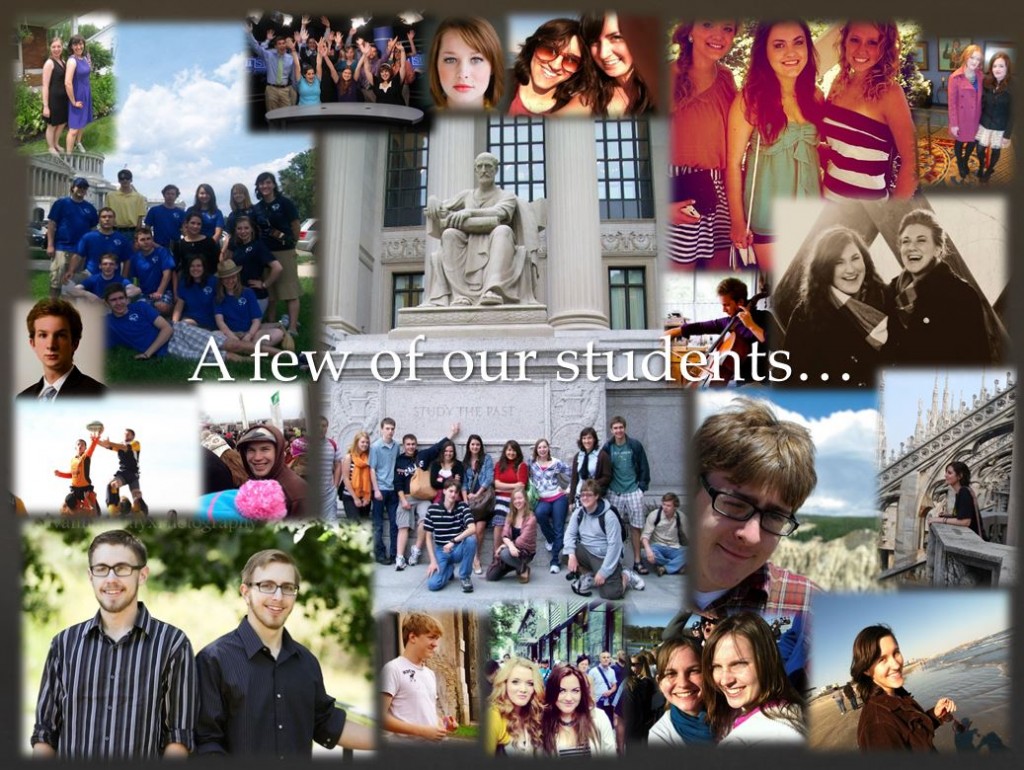 2000 A.D., 79 years after participating in his first great books discussion group, Adler participated in yet another and lives to see the movement enter into a new arena, homeschooling. Having witnessed, and experienced, the results of the hold progressive education and the deconstructists of Western culture have on America’s educational institutions, parents are bailing -out in ever-increasing numbers – between 1.6 and 2 million children are now being homeschooled.
2000 A.D., 79 years after participating in his first great books discussion group, Adler participated in yet another and lives to see the movement enter into a new arena, homeschooling. Having witnessed, and experienced, the results of the hold progressive education and the deconstructists of Western culture have on America’s educational institutions, parents are bailing -out in ever-increasing numbers – between 1.6 and 2 million children are now being homeschooled.
Somewhat in parallel with how St. John’s (no religious affiliation [though originally Anglican, in the 17th century]) and Thomas Aquinas College (Catholic) relate, the latter indirectly spinning-off from the former to include specifically Catholic magisterial material – two new great books homeschool programs are likewise based entirely on the great books approach in their high school programs, and on the Paideia proposals in the Angelicum Academy. In light of the absence of educational progressivism and institutionalized resistance to reform in the homeschool movement, 2000 A.D. bodes well to be the year of the beginning of a revival of the Great Books Movement in education, or, as one author in this issue has called it: the Great Books Homeschool Renaissance.

